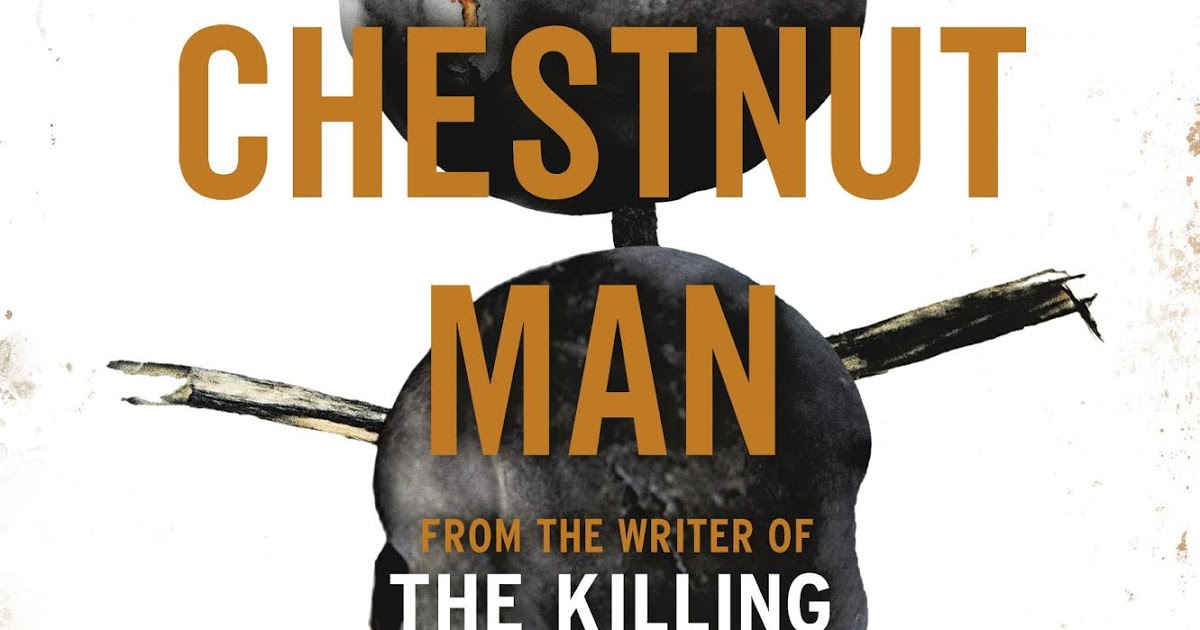During the early portion of this very decade, one of the most popular shows on TV was The Killing. It’s very possible that you watched it, or that it was even one of your favourite shows, but I’ll admit that I never have. I’d always planned to, but it was unfortunately spoiled for me.
What some fans don’t know is that The Killing is actually a remake of a Danish television show called Forbrydelsen, which apparently translates to ‘The Crime.’ Said show aired from January of 2007 to November of 2012, and was created by a man named Soren Sveistrup.
In 2018, Soren Sveistrup released his first novel, which carries the chilling name ‘The Chestnut Man.’ Fast forward to today, and it’s nearing the end of its journey towards a North American release. The estimated release date is September 3rd, through HarperCollins. We were lucky enough to get our hands on an early Advanced Reader Copy, and wanted to share our thoughts. Or, as I should say, I did.
Primarily set in Copenhagen and its neighbouring areas, The Chestnut Man is a dark and chilling tale that is fittingly set during the fall season. It begins in the late 80s, with a shocking killing at a desolate farm, and then jumps forward to modern day, where a serial killer has made himself known. Said killer has a habit of preying upon young women, who he not only murders but also mutilates, taking their limbs for some unknown reason. After this terrible type of pre-death torture, he kills the women and arranges them in ways that taunt the police. His calling card? A little chestnut man, made out of hollowed out chestnuts and matchsticks.

At the same time, a grieving woman returns to work at a high profile position. Her name is Rosa Hartung, and she’s the Minister for Social Affairs. The return is a well documented thing because, just shy of a year before, Rosa’s tween daughter was kidnapped and presumed murdered. Although the girl’s body was never found, a blade bearing her blood and DNA was discovered in a murder scene fetishist’s garage, and he was subsequently charged with her killing. Of course, it helped that he made things easier by confessing.
What complicates things now, however, is that young Kristine Hartung’s fingerprint has been discovered on the first chestnut man. On top of that, Rosa has been receiving strange taunts, threats and messages since returning to work.
Minister Rosa Hartung is not the main protagonist found within The Chestnut Man‘s one hundred and thirty chapters, which are spread over 516 pages. That said, she isn’t a supporting character either. While more of the story focuses on a troubled ex-Europol officer named Hess, and his Copenhagen homicide detective of a partner, Naia Thulin, Rosa’s viewpoint is also utilized quite a bit. Others are as well.
Finding themselves in the midst of a dangerous, threatening and puzzling case, the Danish police send one of their better detectives (Thulin) and her new partner, Hess, to examine the first crime scene and attempt to find the killer. That’s easier said than done, however, as it turns out that the killer is quite a few steps ahead of the police and has gone so far as to muddy the waters to throw them off his trail. The result is an interesting, thought provoking case, which takes the form of a psychological thriller with elements of horror and police procedural dramas. One that is even written in a way that evokes the idea of a screenplay, given its very short chapters and abundance (130!) of them.
One of the most impressive things about The Chestnut Man is the amount of depth and detail that Soren Sveistrup has managed to infuse the story with. His writing (although translated to English by a third party) makes you feel as if you’re there, in the heart of Denmark, where the leaves have changed colours and early snowfall is making roads chaotic. A place where chestnut trees breed family favourite decorations as timeless as they are, and have even inspired a children’s song that invites a mythical Chestnut Man to come visit.

That said, this isn’t a book that will be for everyone. While it’s good and above average, it’s also long in the tooth and is perhaps a bit longer than it needed to be. Then again, the length pays off in the end, with an interesting finale and a twist that I didn’t fully expect, which was a nice change. I’d had inclinations about who was responsible, but one turned out to be a red herring and the other turned out to be only partially correct.
The Chestnut Man is also a slow builder, which starts off with a creepy bang but then slows down and takes time to develop. As such, those who go into it expecting something fast-paced may be disappointed by the fact that it is not. That said, I personally find it hard to fault most things for being slow, and have always appreciated things that take their time to develop, because they usually have a reason for it. Those narratives also often offer the best character development. However, I understand that slow building stories aren’t for everyone, and do wonder if this could have been cut down a little bit in order to make it better than it was.
When I first saw that this book was being released in North America, its name and cover piqued my interest. Immediately afterwards, I looked it up, read the synopsis, saw the good reviews and requested it. The publisher was nice enough to send me a copy in return for an honest review, and I’ll admit that my expectations were high. Perhaps too high. In the end, I enjoyed the book and read through it pretty quickly, but didn’t love it like some others. I had hoped to, and wish I had, but my opinion is that this is a quite good, but not great, read. It’s pretty strong for a debut, but Soren Sveistrup is also no stranger to success.
This review is based on an Advanced Reading Copy that we were provided with by the book’s publisher.

